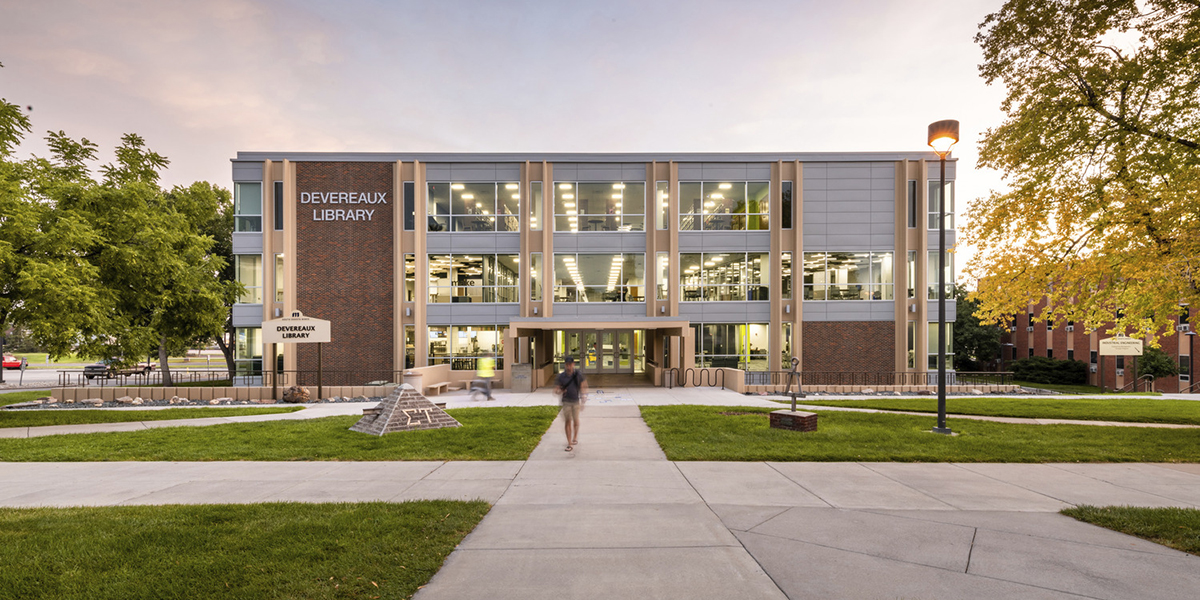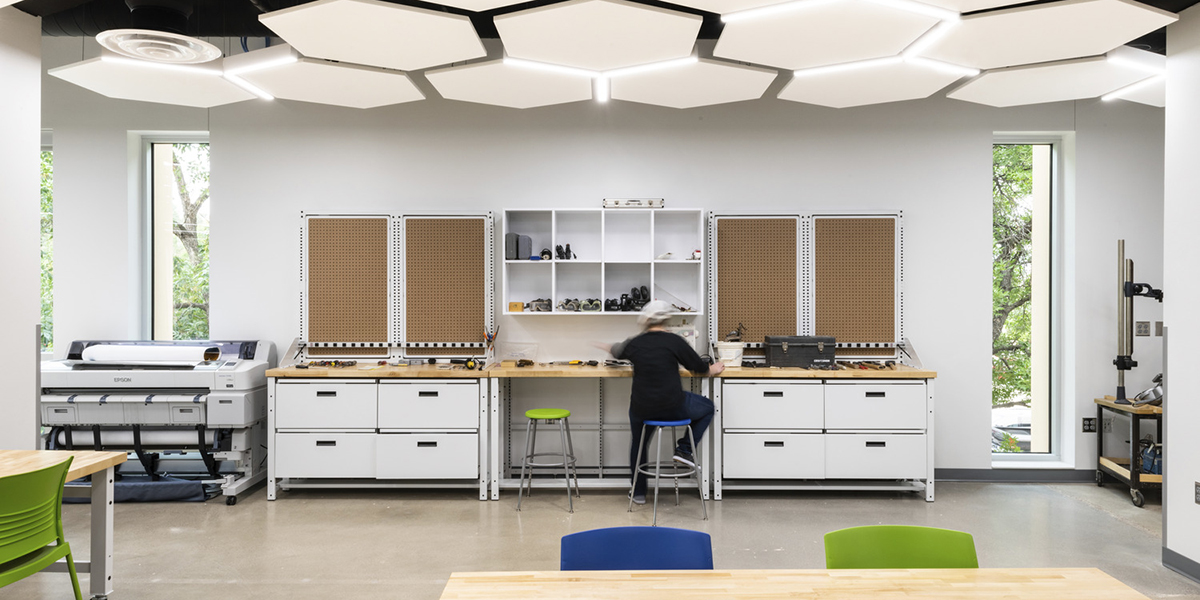This project was designed in partnership with CO-OP Architecture


Awards
IIDA Wisconsin
First Place - Learning/Higher Education
2023
Objective:
Getting Up to Speed
This project started with a simple question: “What does the library of the 21st century look like?” The answer: the library of the future needs to be more than a home for books; it needs to be a forum for the exchange of information, supported by technology, and fueled by the work ethic and ingenuity that the South Dakota School of Mines & Technology (SDSMT) is known for.
With that goal in mind, the intention behind the Devereaux Library remodel was to create a space that was inspiring, bright, and inviting for students.
The existing Deveraux Library was in dire need of an update, having not been touched since the 1960s. The previous space was a fortress, with low ceilings and barely any natural light coming through narrow arrow-slit windows. All three floors were being used to house books, and all provided study spaces were inadequate, often improvised in whatever space was available. Upon reconfiguring the design, the university devoted the majority of space to collaborative learning spaces, reducing the stacks by over 2/3 to accommodate student demand for interactive study areas.


Solution:
A Library of the Future
Focal Elements
The Devereaux Library spans three floors in total. Upon entering the first floor, users encounter bright, open study areas in all directions—a dramatic change from the building’s original nooks and crannies. Opposite the main entry, a central reception desk nestled in an inviting lobby draws visitors through the space.
On the second floor, in addition to collaborative breakout zones, we have incorporated two purpose-built interactive learning spaces: the “slide rule” room—a dedicated math learning lab open 24/7—and a completely kitted-out makerspace with flexible, movable workspaces. A large logo for the university inlaid amongst the makerspace’s concrete flooring instills a sense of college pride in the cutting-edge facility, while hexagon ceiling tiles add dynamic visual interest.
On the third floor is the library itself, updated with an information commons reception desk, and areas for computer and small group usage. Throughout the building, the space has been activated with updated furniture and finishes that match the school’s energetic branding of navy blue and lime green.
College Pride
Originally a mining school, the university wanted this vital student space to showcase their rich history. The college’s colors and branding are displayed throughout the building as a sign of pride. One of the building’s focal points is the entrance ceiling, which makes an impactful first impression. The large, illuminated logo adds a major “wow” factor, expressing school pride while welcoming students.
Assets from the school’s own archives are used to create various focal elements through the space. For example, the stair tower features a digital collage of historical photographs in black and white that celebrates the school’s history.


Effective Study
To create an effective and engaging learning and study environment, daylighting and acoustics were given special credence. The results of our in-depth daylighting study prioritized daylighting in the classrooms and makerspaces in order to activate these collaborative areas. These spaces are followed by study areas that still benefit from daylight but do not need direct access. Lastly, the secluded, heads-down areas were strategically placed farthest away from the daylight for quiet focus.
Acoustically, high Noise Reduction Coefficient (NRC) tiles combined with fitting flooring materials and a soft ceiling were used to absorb sound to help create the ideal quiet study environment. The ceiling undulates between the existing concrete and these high NRC acoustical ceiling clouds. These clouds both add visual texture while performing an important function.
This remodel not only brought the Devereaux Library up to modern-day standards but also created an engaging learning and study environment, calculated to meet a modern-day student’s needs. The building is not just a library, but a source of pride for SDSMT—serving as a historical archive, creative makerspace, learning environment, and study center.








